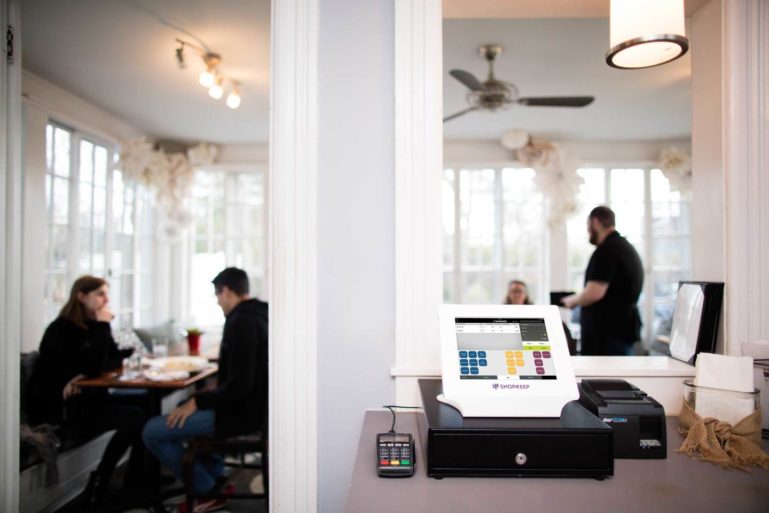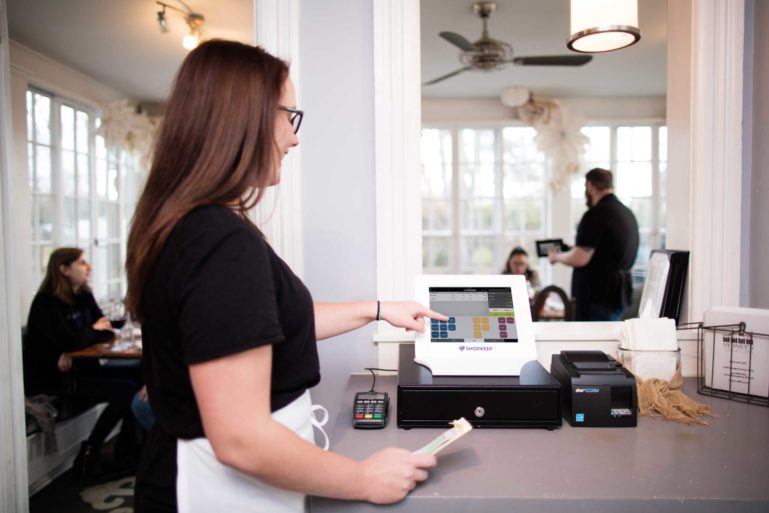
How Much Does A Restaurant POS System Cost?
Whether you own a few full-service restaurants or a single location quick-service eatery, you need a point of sale (POS) system. In the restaurant business, a POS system is the foundation of the entire operation.
It’s the tool you use to take customer orders, send those requests to the kitchen, and keep track of which table gets the steak and which one gets the vegetarian dish.
It’s also how businesses know if they’re achieving sales goals for the week, month, or year. Even though a simple cash register would be cheaper, it’s not going to pack as much power as a point of sale system. Cash registers don’t provide you with the tools you need to control the more delicate details of your business, which is why a POS system is table stakes for any serious restaurateur. But this level of control does come with a price tag.
While price shouldn’t be the ultimate deciding factor when it comes to choosing a point of sale system for your restaurant, cost undoubtedly plays a significant role.
Point of sale software features and functionality combined with the assortment of hardware components like touch screen monitors or tablets, receipt printers, and cash drawers, all have an impact on the total cost of ownership.
Restaurant POS systems cost a couple of dollars a day to tens of thousands of dollars a year. So, how much should you spend on a POS system? Since there is such a drastic difference in price, a general rule-of-thumb small businesses should follow is to pay no more than 1-4 percent of their overall annual revenue on a point of sale solution.
How much does a restaurant POS system cost? Let’s take a closer look.
The Cost Of POS Software
First, we want to talk about software. POS software is essentially the brains behind the entire operation. It’s where all the features and functionality live. For instance, inventory management for all your menu items. It’s also where you can manage your staff and shifts for payroll reporting and track customer visits to help with your marketing initiatives.
It’s also a hub for robust reporting and analytics that provide valuable insight into the performance of your business – so you can make smarter, data-driven decisions.
When it comes to software, you have two choices:
Legacy POS Software
This type of software is installed on an internal back office server that hosts a network of computers. The computers are the customer-facing tools you will use to interact with the point of sale software. Sounds like a bunch of technical jargon? Put simply, think of the POS software as a file saved on your desktop computer. Unless you’re at your desktop, you can’t access the file.
Depending on the specific needs of your restaurant, expect to pay anywhere from $600 – $1000+ for the software, per user. If you have multiple POS stations, for example, two for the servers and one behind the bar, you’re going to pay somewhere within that price range, times three. Let’s split the difference and say it’s $800 per station. In this example, your total cost is $2,400 just for the software.
Cloud-Based POS Software
Rather than software that is installed locally with data that can only be accessed when you’re in the building, cloud technology opened the doors for the Software-as-a-Service (SaaS) business model.
This allowed point of sale software companies to significantly lower the startup cost of adopting POS software without sacrificing functionality. They host the solution, securely store the data in the cloud, and provide you with an easy way to access it through a native app or web-based system. They do all of the heavy-lifting, and you only pay a small monthly fee for the services.
There are some free cloud-based software solutions on the market. However, you may find that you need more functionality than what they have to offer. If that’s the case, expect to pay around $59 – $300+ per station, depending on the vendor and pricing plan you choose.
Again, let’s split the difference and say it will cost $150 for the same setup described in our previous example, two server stations and one behind the bar. That’s only $450. A $1,950 difference compared to the cost of legacy software.

The Cost Of POS Hardware
To have a complete point of sale system, not only do you need great software, but you also need reliable hardware. Whether your servers are taking orders at the table with an iPad or printing a guest check at the POS station, the equipment is at the core of those physical interactions.
Here’s what type of hardware you’ll need for your restaurant.
Touch Screen Monitor or Tablets
Legacy POS software often leverages all-in-one touchscreen devices that employees will use to ring up orders. These devices are stationary, and you can expect to pay $900 – $2000+ per unit. Let’s generously split the difference and say it will cost you $1,400 per unit. You need three of them, and that quickly adds up to $4,200.
On the other hand, most cloud-based POS software is designed for use on tablets. Not only giving your POS system a much smaller footprint, but also a mobile one. A new iPad will just set you back $350, and Android and Windows tablets can be purchased for around $200. Let’s say you choose software that’s compatible with iPads. Three brand new iPads cost $1,050; a $3,150 difference compared to touchscreen devices.
Receipt Printers
Regardless of the software you choose, you’re going to need some additional hardware like receipt printers. Next, to each station, you’re going to need a receipt printer so you can print guest checks and end of shift reports so employees can cash out.
Receipt printers are a simple piece of hardware and will only set you back about $250.
Kitchen Printers
Besides receipt printers, you’ll also want to think about kitchen printers. When a server rings up an order, the order information is routed to a kitchen printer, or multiple kitchen printers so the chefs can start preparing the meal.
While the same type of receipt printers can be used as kitchen printers, it’s best to put a what’s known as an impact printer in the back of the house. Unlike receipt printers that rely on thermal paper and heat to print, impact printers use ink ribbons. These ribbons print in both black and red, which makes it easier for the kitchen staff to see special instructions about the order. Things such as no onion or extra cheese will print in red below the main item.
Impact kitchen printers will cost about $100 more than a receipt printer – about $350.
Cash Drawers
Specific areas of your restaurant may also require the inclusion of a cash drawer. For instance, behind the bar or at the front counter so patrons can place an order and settle the check all in one transaction.
Cash drawers will be your cheapest piece of hardware. Look to spend about as little as $100 – $140 depending on the size and style you want.
Tablet Enclosures and Stands
If you end up going the cloud POS route and use a tablet, you’re going to want to protect it from the harsh environment of your restaurant.
A basic enclosure will typically cost you around $100 and a more stylish one could cost as much as $200.
Credit Card Reader
Lastly, you’re going to need a credit card reader so you can accept credit card payments.
Since credit and debit cards are becoming the preferred payment methods by consumers, it makes financial sense to give your customers the choice of cash or card.
For a simple magstripe only credit card reader, the cost can be as little as $100. For a reader that is a magstripe reader, EMV reader, and pinpad, expect to spend about $300.
In addition to the expense of the credit card reader, you also need credit processing services to power your reader and ensure you receive the funds from those credit card sales.
That brings us to our next point.

Credit Card Processing and Gift Cards
Since you can’t operate a credit card terminal without processing services, you’ll need to set up a merchant service account through a Merchant Service Provider (MSP). More often than not, this account is set up through your point of sale provider, so payments are integrated directly with your POS system.
Credit card processing fees are a complicated topic when you start scratching below the surface, so for the sake of this context, we’re going to keep it pretty simple. Every time you run a credit card transaction, you’re charged what’s known as interchange-plus rates from your MSP. These rates include a flat fee of $0.05 – $0.30 per transaction, plus a percentage of the dollar amount of the sale that can range from 1.5% – 3.0% depending on the card type.
SEE ALSO: Learn More About Credit Card Processing Fees
POS Add-on Services
In addition to point of sale functionality, you also want to take into consideration the cost of add-on services. Services such as email marketing, online ordering, or accounting that can integrate with your POS system will help you automate a lot of your core business processes.
How these services are priced depends on your POS software vendor. Some may charge a monthly fee per service, typically $15 – $30, while others may bundle integrations into the price you pay for the POS software. So, if you pay on a monthly basis, that monthly fee would cover the POS software, and a selection of integrations decided on by the POS vendor. Often, this type of pricing is a better value, because the business owner gets access to several integrations at once instead of having to pay for each a la carte.
Installation, Training and, Support
Some POS providers will offer additional services in the form of setup, installation, training, or support. The cost of these will always be unique per business, so it’s up to you to know exactly what you’re getting for your money.
- How is the system installed? Will someone come to my location or walk me through the setup over the phone?
- Will the POS provider build your entire menu complete with all the appropriate menu groups and modifiers you have?
- What kind of training will you and your staff receive? How many hours will it take and what if we need more time?
- Does customer support outside of email or chat have an additional cost?
Despite these services being an added expense, they are an excellent safety net if you get into the weeds of setting up a new system on your own. However, if you’re not careful, they can quickly add up.
With most legacy POS systems, phone support and training is not included in the software package you purchased. Instead, these companies will charge you a monthly or yearly fee to cover any assistance you may need. The way they bundle the packages is different, for example, five hours of support for a specified price. Others may bundle them per incident and charge you per support case or after you exceed a certain amount of support requests. Anything additional beyond the bundles will cost more.
On the flipside, the great thing about cloud-based systems like ShopKeep, customer support is included in your monthly software fee. You can call us one time or 100 times, and we won’t charge you any extra.
The Bottom Line
How much does a restaurant POS system cost? Well, that all depends if you choose an iPad POS or a legacy system. If you choose to have one station or multiple stations to ring up orders. If you elect to include any add-on services or pay for any professional training. Remember, the price tag is only worth the value the solution brings to your business.
Want to try ShopKeep for yourself?
Just answer a few easy questions.
Need help finding the right point of sale?
Just complete the form. We’ll call you right back to explain how ShopKeep can work for you.
Hit the ground running.Sprinting, in fact!
Read our free, comprehensive guide, Small Business 101, to learn all you need to know about starting a thriving business.

